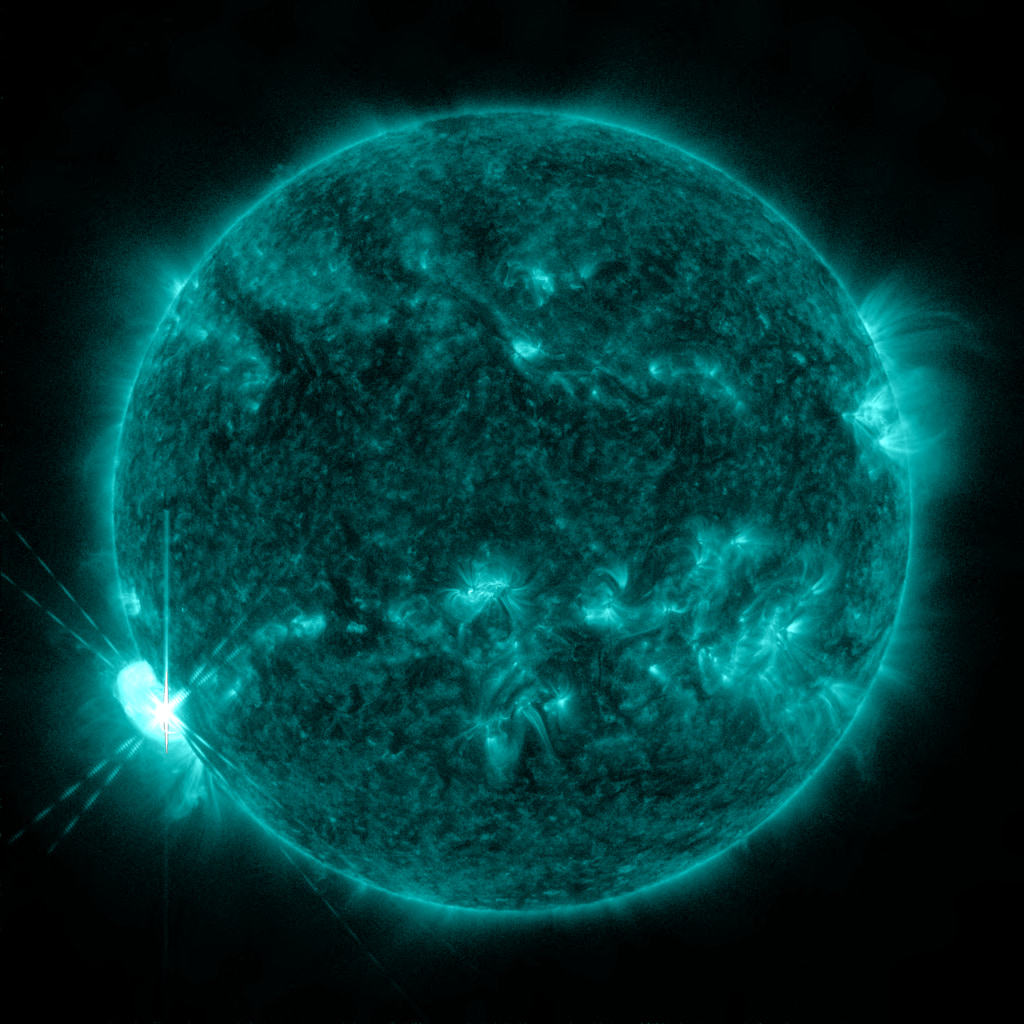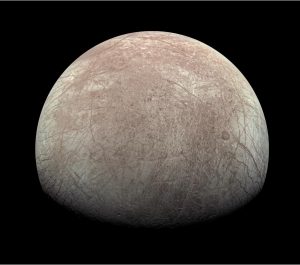
Our Sun is going through a highly energetic phase: A look at the 25th solar activity cycle
Associate Professor Toriumi Shin (Department of Solar System Science), studies the star that is the closest and most important to our planet: the Sun. Toriumi takes us on a tour of the Sun today, and what that means for our planet.
Despite being a researcher and keen on quantitative descriptions, I chose more intuitive and fun title for this article. But what does it actually mean when we say that the Sun is “energetic”? In this article, we’ll take a look at how solar activity has been increasing during the 2020s, and the significance of solar observations by future missions such as Solar-C (EUVST).
Solar activity refers to changes in the Sun’s magnetic field, which repeats over a cycle of about eleven years. The magnetic variations cause the number of sunspots to increase and decrease, which also affects the frequency of solar flares; powerful eruptions of radiation on the Sun’s surface that spread outwards through the Solar System and cause fluctuations in phenomena such as the aurora on Earth. The impact on the Earth and the surroundings of our planet caused by fluctuations in solar activity are referred to as “space weather”. In April this year, space weather became a hot topic when the Japanese Ministry of Internal Affairs and Communications estimated the potential cell phone outages, wide-spread power outages, and the reduced GPS accuracy that would occur if extreme space weather phenomena on the scale of an X10-class flare were to repeatedly occur for about two weeks. X-class flares are the strongest category of solar flare, with the subsequent number indicating the strength within that class.
The cycle of the Sun’s activity is defined by the number of sunspots visible on the Sun’s surface. In December 2019, the Sun entered its 25th activity cycle. This led to an expected increase in solar activity, resulting in the large flares that have been reported recently and continue to occur. Here’s a list of a few recent events:
- On October 28, 2021, the second X-class flare of Cycle 25 occurred. As it occurred near the centre of the Sun’s surface (right in front of the Earth), there were concerns about the impact on the Earth, and the National Institute of Information and Communications Technology (NICT) sent out information which was reported on by the media.
- Of the 49 Starlink satellites that were launched on February 3, 2022, 40 re-entered the Earth’s atmosphere. It is believed that the satellites’ orbit was disrupted by the expansion of the Earth’s atmosphere caused by a flare that had occurred just before launch.
- Numerous X-class flares occurred between March and April this year.
- On May 3, an X1.1 class flare occurred, and on May 10, this was followed by an X1.5 class flare.
The change in the number of sunspots and flare occurrence is illustrated in the following figure.

An interesting point in this plot is the difference to previous activity cycles. Cycle 23 in the late 1990s and 2000s was very active and produced a number of strong flares, notably the X17-class flare in October 2003. The most powerful flare was in the X28 class, and may actually have been stronger still since reports indicated the event exceeded the measurement limit of the X-ray detector, so the flare may actually have reached somewhere around a whopping X45.
Conversely, Cycle 24 that ran from the late 2000s to the 2010s, was weak, with the sunspot number showing its lowest maximum in the last 100 years. This was an era of unprecedented powerful solar observing networks, including JAXA’s Hinode satellite (launch 2006) and NASA’s SDO satellite (launch 2010), but the largest flare during Cycle 24 was only X9.3 in September 2017, with no event larger than X10 during that period.
However, in the current Cycle 25, the number of recent flare occurrences has not only surpassed the previous cycle, but almost caught up with Cycle 23. There were predictions that the number of sunspots in Cycle 25 would be lower than in Cycle 24, but so far that has not been the case.
In recent years, powerful additions have been made to the solar observing network. In 2018, NASA launched the Parker Solar Probe which orbits the Sun approximately every three months, decreasing its closest distance each lap to allow the probe to directly penetrate the outer corona (the ultra-hot solar atmosphere that exceeds 1 million degrees Celsius). ESA’s Solar Orbiter that was launched in 2020 observes the Sun from higher latitudes while approaching to a distance less than the orbit of Mercury. As these spacecraft study the Sun, they will explore how plasma (ionised hot gas) is accelerated and flows out into space from the Sun as the solar wind. The ESA/JAXA Mercury spacecraft, BepiColombo, which was launched in 2018, has also been added to this solar network as the spacecraft explores the space environment close to the orbit of Mercury. This creates a multi-point observation network in the inner heliosphere. Meanwhile on the ground, the Daniel K. Inouye Solar Telescope (DKIST) situated on the Hawaiian Island of Maui began observations in 2019. The telescope boasts the world’s largest aperture at 4m to perform precise observations by spatially resolving the fine magnetic structure of the solar surface.
In the 2020s, JAXA will launch the next-generation solar observing satellite, Solar-C (EUVST). The current schedule is for a launch in FY 2026. Like Hinode and SDO, Solar-C (EUVST) will observe the Sun from near the Earth. The satellite will conduct spectroscopic observations (looking at the emission of different wavelengths of light) using ultraviolet light which is emitted by very hot gas. The temperature of the Sun’s atmosphere rises from about ten thousand degrees Celsius (in the chromosphere) to over one million degrees Celsius (in the corona) as we move outwards from the surface of the Sun. The plasma that is produced by the flare has an even hotter temperature that exceeds 10 million degrees Celsius. Solar-C (EUVST) will be the first telescope to observe these different temperatures of solar plasmas (i.e. at different altitudes within the Sun) with high temporal and spatial resolution by using UV spectroscopy. This will allow us to explore the mysteries of how the solar corona is heated to reach temperatures of 1 million degrees, and how the solar wind is accelerated away from the Sun and out into the Solar System.
DKIST is making ultra-high precision observations of the solar surface, while the Parker Solar Probe and Solar Orbiter get close to the Sun, but only as close as ten times the solar radius at best. Solar-C (EUVST) is designed to tackle this gap, aiming to elucidate how energy is transported from the solar surface to the corona.

This is not all. As solar activity further increases, more sunspots are expected to appear, along with the occurrence of more powerful flares. Solar-C (EUVST) is scheduled to be launched at a time just between the 25th cycle maximum and the second half of the cycle. A The second scientific goal is therefore to take advantage of this opportunity to understand the detailed mechanism that cause flares.
From a longer-term perspective, solar activity was generally high in the latter half of the 20th century that included Cycle 23, during a time when spacecraft observations were developing. In this period, the human understanding of solar activity blossomed. Although Cycle 24 was comparatively sluggish, if the Sun is “energetic” during Cycle 25, we can expect that the new solar observation network represented by Solar-C (EUVST) will advance the study of sunspots and flares, and clarify how these phenomena affect the Solar System, including the Earth.
The fact that the Sun changes between active and inactive phases depending on the cycle also raises new questions about what is a “normal” level of activity for the Sun. If we only observe during the active cycles, our findings may be biased towards the active Sun. Conversely, there have been extended periods in the past, such as the Maunder Minimum, when sunspots are reported to have rarely appeared. Solely observing these types of cycles may also not allow us to understand the Sun with sunspots as it exists today. Notably, there are stars in our Universe that, despite their similarity to our Sun, produce flares that are much more massive than that seen from our Sun. It therefore seems important to study the variety of cycles of the Sun from the past to the future, and combine these with the results from stellar observations, to truly understand the diversity and commonality of the Sun and other stars.
Further Information:
Solar-C (EUVST) mission website
BepiColombo/MIO orbiter website
Hinode mission website
Parker Solar Probe (NASA site)
ESA Solar Orbiter (ESA site)
SDO: Solar Dynamics Observatory (NASA site)


 Previous Post
Previous Post Next Post
Next Post






